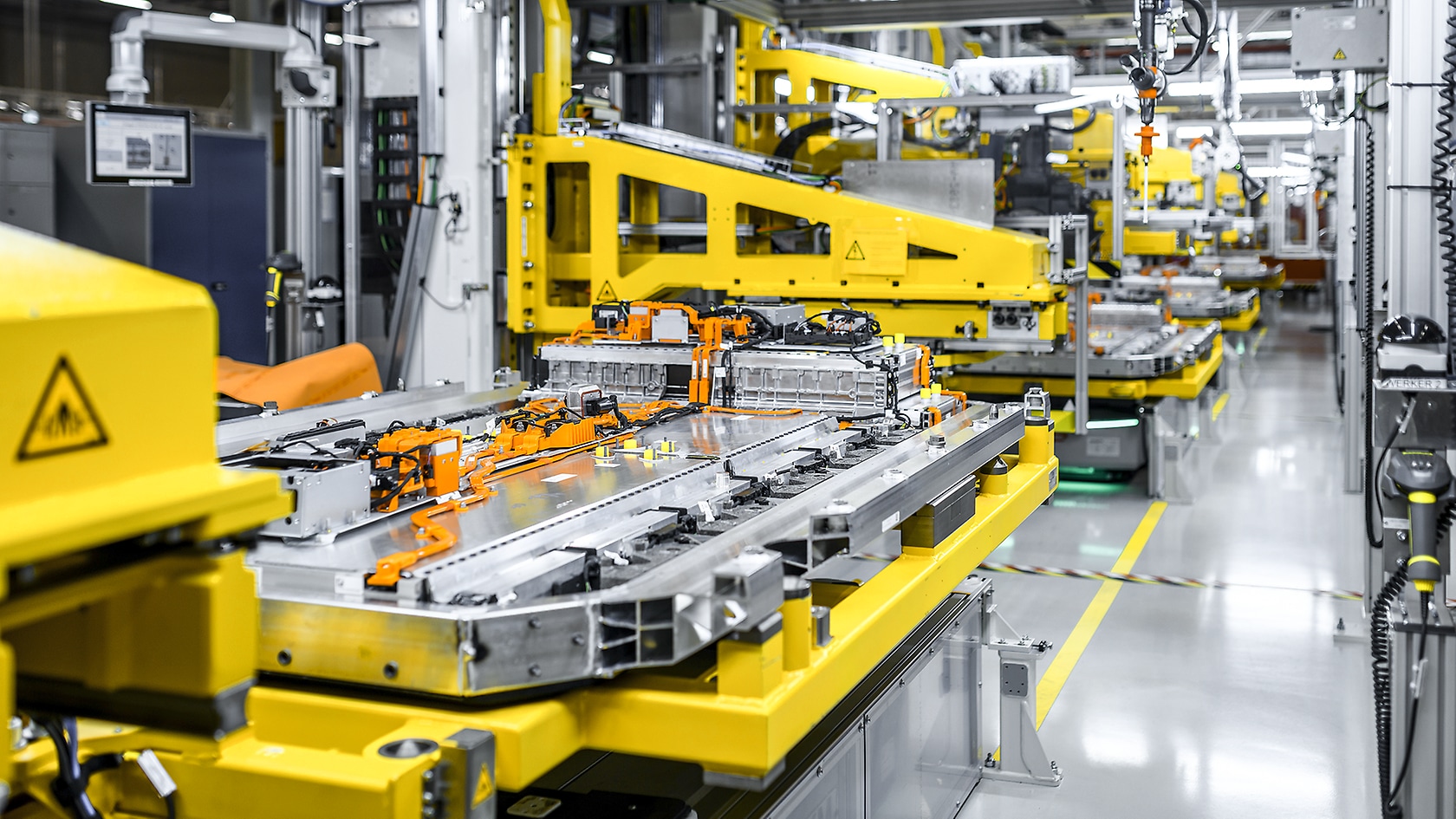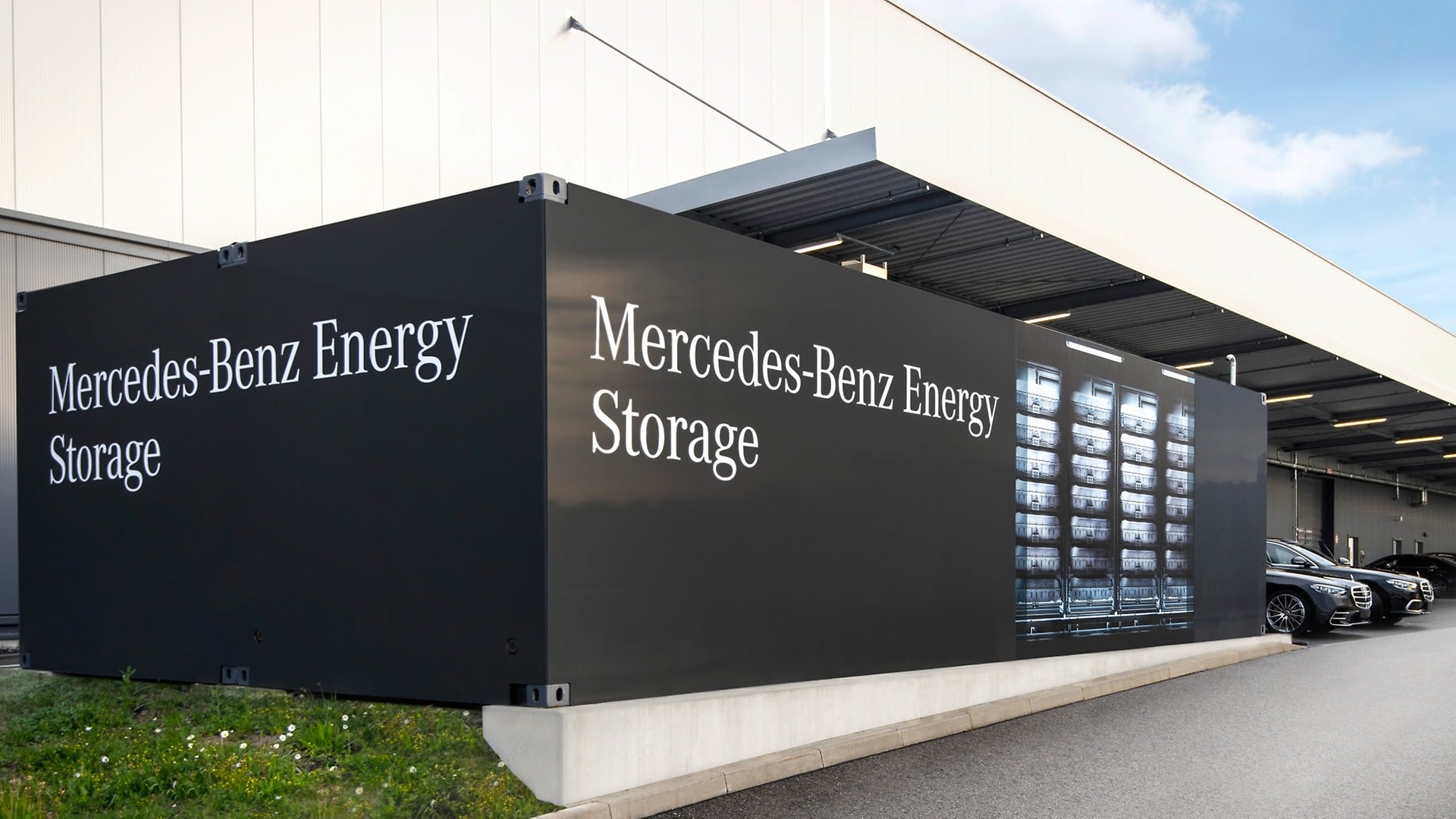Shifting from electric-first to electric-only, Mercedes-Benz is accelerating toward an emissions-free and software-driven future. At the heart of this transformation: The battery. With respect to the circular economy of battery systems, we pursue a holistic approach in which we address three core topics: Design for Environment, value retention, and closing the loop.
Mercedes-Benz is getting ready to go all electric by the end of the decade, where market conditions allow. Our portfolio already includes six all-electric models. By 2022, Mercedes-Benz will have battery electric vehicles (BEV) in all segments the company serves. From 2025 onwards, all newly launched vehicle architectures will be electric-only and customers will be able to choose an all-electric alternative for every model the company makes.
The lithium-ion battery is the centerpiece of each electric vehicle. However, battery production requires a lot of energy. Besides, lithium-ion batteries contain valuable raw materials such as lithium, manganese, nickel, and cobalt. That’s why circular economy plays a key role in battery systems.
Design for Environment
As part of our holistic approach, we have circular economy in mind from the very start whenever we develop a product. This also applies to the development of the entire battery technology. Already during the development of a vehicle, we create a concept for each vehicle model in which all components and materials are analyzed for their suitability in the context of a circular economy. It also examines the extent to which the components and materials are suitable for the various stages of the recycling process, including the material recycling of the battery raw materials used. This analysis takes the entire value chain into account, from the mine to the recycling process. In doing so, we also pay high attention to the respect for human rights in the employees' working conditions.
Our clearly defined development goal is to boost energy density in order to greatly extend the range of future batteries. We also intend to significantly shorten charging times, accelerate the series maturity of future battery technologies, and further reduce the use of critical materials. For example, in the coming generations of battery cells the cobalt content will already be reduced to less than ten percent. The objective is to dispense with materials such as cobalt altogether by using post-lithium-ion technologies with new material compositions.
The further optimization of recyclability and its implementation is also part of our holistic battery strategy.
The EQS is optionally equipped with modular battery layouts, which allow different spectrums in range and power. With a usable energy content of up to 108 kWh and support from first-class aerodynamics, the EQS achieves ranges of more than 700 kilometers (WLTP). The innovative software developed in-house provides the technological basis for over-the-air updates (OTA). This ensures that the energy management of the EQS can always be updated to state-of-the-art status during the entire service life of the vehicle. The high-performance cell chemistry of the EQS battery uses nickel, cobalt, and manganese in an 8:1:1 ratio. This reduces the cobalt content to around ten percent. The production of the battery cells is CO₂-neutral.
Value retention
We strive to reuse batteries before they are recycled. Reprocessing a used battery consumes much less energy and raw materials than producing a new one. And every reprocessed battery reduces the volume of waste, because it forestalls the production of a new battery to meet the demand for replacement parts or other applications.
Defective batteries are reprocessed for reuse in vehicles. Because of our high quality standards, this is done for most of the batteries at our central remanufacturing plant in Mannheim. After being remanufactured (reman) in line with the requirements of series production, the batteries are closely inspected to ensure that their function and quality are the same as those of a new part. We offer such reman batteries for all electric vehicles in order to conserve resources and do justice to the concept of the circular economy.
Batteries that are no longer suitable for reuse in a vehicle – for example, because their residual capacity is too low – can be reprocessed for use in a stationary energy storage unit. This is how we improve the environmental balance of electric vehicles while also contributing to the establishment of a sustainable energy industry. This is where Mercedes-Benz Energy GmbH, a subsidiary of Mercedes-Benz AG, responsible for the development of innovative energy storage solutions, comes in. Its energy storage systems are based on automotive battery technology used in electric and hybrid vehicles from Mercedes-Benz and smart and can offset fluctuations in electricity production from renewable sources, smooth out load peaks, and serve as backup power sources for an uninterrupted energy supply. Many energy storage systems of this kind, with a total capacity of more than 95 MWh, are already operating in Germany – a major part are Mercedes-Benz energy storage systems.
Mercedes-Benz Energy focuses in particular on applications in the field of 2nd life and spare parts storage. The 2nd life storage system is about integrating an unchanged vehicle battery into an energy storage environment. Such a stationary energy storage unit with a capacity of 1,400 kWh is already in operation at our Mercedes-Benz Factory 56. It can also store solar energy and release it at night or on overcast days.
Closing the loop
Material recycling is at the end of a battery's life and is the key to closing the material loop.. Battery recycling is essential in order to provide the electric mobility of the future with a sustainable business model.
Only after it is no longer possible to reuse a battery it is recycled in order to recover valuable raw materials. Today we are already able to go far beyond the recycling quotas that are prescribed for drive batteries by the battery law. The battery housings, the cables, and the power rails can be recycled without any difficulty. Recycling the battery modules, which contain most of the rare materials, is somewhat more demanding. The processes already exist, but they still need to be refined so that the valuable raw materials inside the battery cells can be recovered in as pure a state as possible.
For our vehicle batteries, Mercedes-Benz is actively involved in the research and development of new recycling technologies and their establishment on the market. To this end, we are working with specialized partner companies to further optimize the recycling process. In addition, we are participating in funding and research projects and forging ahead with the development of innovative technologies for the environmentally friendly and economical reuse of valuable raw materials. The goal is to increase recycling quotas even further. The idea behind these efforts is that we can use the old batteries of today as a “mine” for the batteries of tomorrow. In the future, we will use them to extract the raw materials we need for new battery systems with the help of recycling.
We are currently also evaluating and planning the construction of a battery recycling factory in Kuppenheim, Germany, in order to create and secure recycling capacities and the related expertise. Start of operations is planned for 2023, depending on the outcome of the promising discussions with public authorities.
We expect that the number of batteries to be recycled will rise steadily as electric vehicles increasingly penetrate the market. With regard to the life cycle of electric vehicles, significant amounts of material to be recycled are to be expected in the 2030s. Only then will a first large proportion of electric vehicles, which will be delivered in larger quantities from 2020, have reached the end of their service life.

